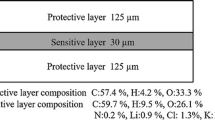Background and Purpose:
The depth-dose curve of electron beams is mainly determined by their energy. For accelerators with scatter foils, the electron energy can, in principle, be verified by measuring the amount of the contaminating photons. This paper investigates whether exit dose measurements and evaluations of the optical density of portal films can be used to verify the energy of the electron beam in a clinically relevant setting.
Material and Methods:
During irradiation of the head and neck region of an Alderson-Rando phantom with 6- to 21-MeV electron beams, the exit dose rates behind the phantom and the dose rates at the position of a film cassette were measured. The optical density of films (EC® film/EC-L Regular® and EC-L Fast® cassettes, Eastman Kodak Comp., Rochester, NY, USA) exposed to beams of different energies was evaluated.
Results:
The exit and the cassette dose rates showed a steep increase with increasing electron energy. Due to its density behavior, the film with both types of cassettes failed to generate images for lower electron energies (6 and 9 MeV) but presented a strong ascent of the optical density—until reaching the saturation—with increasing electron energy.
Conclusion:
Measurements of the exit dose and evaluations of the optical density of portal films can be used to verify and document the energy of electron beams during radiotherapy.
Hintergrund und Ziel:
Der Tiefendosisverlauf von Elektronenfeldern wird hauptsächlich durch deren Energie bestimmt. Für Beschleuniger mit Streufolien kann die Elektronenenergie prinzipiell über die Energieabhängigkeit der Photonenkontamination verifiziert werden. Die vorliegende Arbeit untersucht die Eignung von Messungen der Austrittsdosis und der Auswertung der optischen Dichte von Verifikationsfilmen zur Energiekontrolle von Elektronenfeldern in einem klinikrelevanten Ansatz.
Material und Methodik:
Bei der Bestrahlung der Halsregion eines Alderson-Rando-Phantoms mit Elektronen der Energien von 6 bis 21 MeV wurden die Austrittsdosisleistung hinter dem Phantom und die Dosisleistung an der Position einer Filmkassette gemessen. Die optische Dichte von Portfilmen (EC®-Film/EC-L Regular®-und EC-L Fast®-Kassetten, Eastman Kodak Comp., Rochester, NY, USA), die mit den Feldern der verschiedenen Energien bestrahlt wurden, wurde ermittelt.
Ergebnisse:
Sowohl die Austrittsdosisleistung als auch die Dosisleistung an der Kassettenposition zeigten einen steilen Anstieg mit Erhöhung der Elektronenenergie. Wegen seiner Belichtungscharakteristik ist der Film mit beiden Kassettentypen nicht zur Bildgebung bei geringen Elektronenenergien (6 und 9 MeV) geeignet, zeigt aber ansonsten einen starken Anstieg der optischen Dichte mit zunehmender Elektronenenergie bis zum Erreichen der Sättigung.
Schlussfolgerung:
Durch Messung der Austrittsdosis oder der optischen Dichte von Portfilmen kann die Energie von Elektronenfeldern während der Strahlentherapie verifiziert und dokumentiert werden.
Similar content being viewed by others
Author information
Authors and Affiliations
Corresponding author
Rights and permissions
About this article
Cite this article
Geyer, P., Baus, W.W. & Baumann, M. In Vivo Verification of Electron Beam Energy by Patient Exit Dose and Optical Density of Portal Films. Strahlenther Onkol 180, 62–65 (2004). https://doi.org/10.1007/s00066-004-1172-y
Received:
Accepted:
Issue Date:
DOI: https://doi.org/10.1007/s00066-004-1172-y
Key Words:
- Radiotherapy
- Quality assurance
- Electron beams
- Energy verification
- Photon contamination
- Exit dose
- Port film




